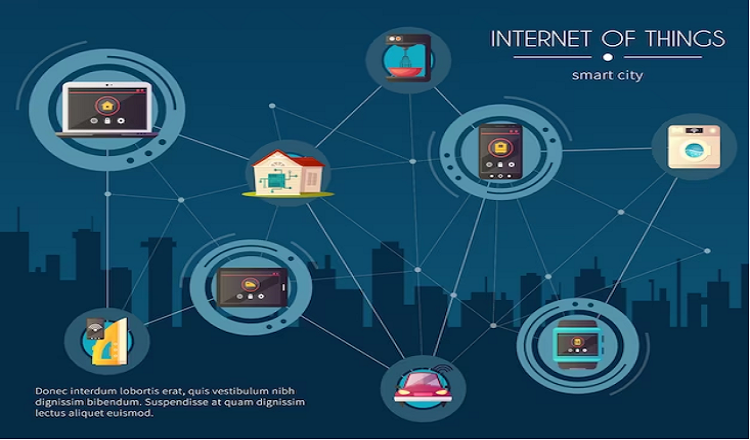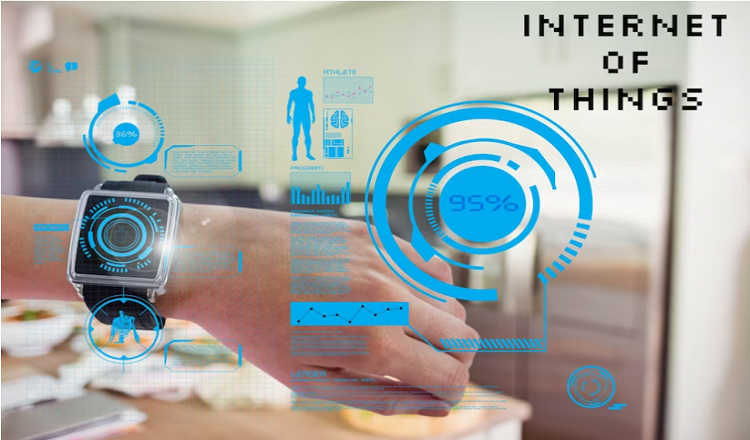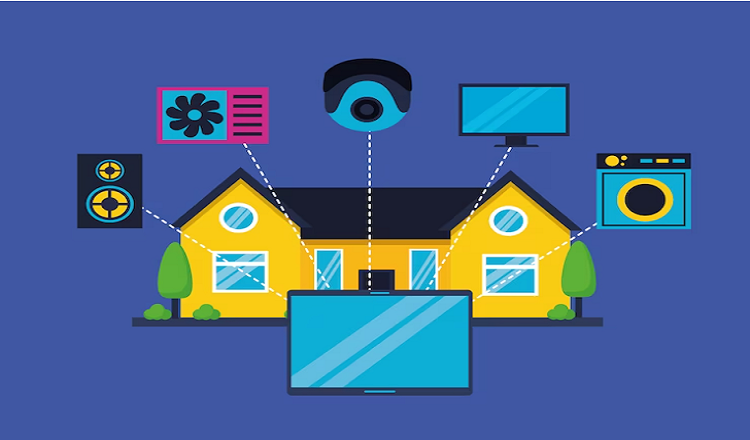Welcome to the world of the Internet of Things (IoT) and smart homes, where technology and convenience are rapidly becoming one and the same. Smart homes, once a concept relegated to science fiction, have become a reality in recent years. With the advent of the IoT, our homes are becoming smarter, more connected, and more intuitive than ever before. The potential for IoT in smart homes and connected devices is enormous, and it’s only getting bigger.
In case you’re not familiar, IoT is the technology that enables devices to communicate with each other through the internet. Smart homes are a perfect application of this technology, as they allow homeowners to control and automate various functions in their homes remotely. From turning off the lights to adjusting the temperature, from opening and closing blinds to monitoring security cameras, the potential uses for IoT in smart homes are vast and varied.
The importance of this topic cannot be overstated. As we continue to rely more and more on technology in our daily lives, the potential for IoT in smart homes becomes increasingly significant. Smart homes and connected devices offer a level of convenience and automation that was once unimaginable, making our lives easier and more efficient. So, let’s explore the potential of IoT in smart homes and connected devices and how this technology is changing the way we live, work, and play
Benefits of IoT for smart homes
One of the most significant benefits of IoT in smart homes is the increased energy efficiency it provides. By automating the control of lighting, heating, and cooling systems, and by utilizing smart sensors to monitor and optimize energy usage, smart homes can drastically reduce energy consumption and save homeowners money on their utility bills. In addition to cost savings, this also helps to reduce our overall carbon footprint and make our homes more environmentally friendly.
Another benefit of IoT in smart homes is enhanced security and safety. With smart security systems that include cameras, motion sensors, and smart locks, homeowners can monitor their homes and respond to potential security threats remotely. Smart homes can also automate safety features like smoke detectors and carbon monoxide sensors, giving homeowners peace of mind and greater control over their homes’ safety.
Finally, smart homes can provide improved convenience and comfort. With voice-activated assistants and smart home apps, homeowners can easily control their homes’ functions from anywhere, anytime. From adjusting the temperature to turning on the lights, smart homes make it easier and more convenient to manage our daily routines. Plus, with smart appliances like refrigerators and ovens, homeowners can streamline their household chores and spend more time doing what they love
.
Current state of IoT in smart homes
The current state of IoT in smart homes is rapidly evolving. With advancements in technology, smart homes are becoming more connected and intuitive than ever before. The current technology includes smart home hubs, smart speakers, smart thermostats, smart lighting, and more. These devices work together to create a seamless, automated experience for homeowners.
The adoption rate of IoT in smart homes is also increasing. According to recent studies, the global smart home market is expected to grow at a CAGR of 21.5% between 2020 and 2027. This growth is being driven by factors such as increased demand for home automation, greater connectivity, and advances in smart home technology.
Key players in the market include companies like Google, Amazon, Apple, and Samsung, who are all investing heavily in smart home technology. They offer a range of smart home devices and services, from voice-activated assistants to home security systems. As the market continues to grow and evolve, we can expect to see more players entering the market, offering new and innovative ways to make our homes smarter and more connected
.
Challenges facing IoT in smart homes
While IoT in smart homes has many benefits, it also faces several challenges. One of the biggest challenges is security concerns. With the increasing number of connected devices, the risk of cyber-attacks and data breaches is higher than ever. It’s crucial to ensure that smart homes are secure and protected from potential threats, and that homeowners’ data is kept safe.
Interoperability issues are another challenge facing IoT in smart homes. With so many different devices and platforms available, it can be challenging to get them all to work together seamlessly. This can cause frustration for homeowners, who may have to deal with multiple apps and systems to control their home’s functions.
Finally, the cost of implementation is a significant challenge for many homeowners. While smart home devices can save money on utility bills in the long run, the initial cost of purchasing and installing these devices can be high. This can be a barrier to entry for many homeowners, particularly those on a tight budget.
Addressing these challenges is essential for the widespread adoption of IoT in smart homes. As technology continues to advance, we can expect to see improvements in security, interoperability, and cost, making smart homes more accessible and user-friendly for everyone.
Future of IoT in smart homes
The future of IoT in smart homes is exciting and full of potential. Advancements in technology, such as machine learning, artificial intelligence, and the Internet of Things (IoT), will continue to transform the way we interact with our homes. These advancements will lead to even more intuitive, connected, and automated experiences, making our homes more efficient, comfortable, and convenient.
There is also great potential for greater integration of smart home devices. With the increasing number of connected devices, we can expect to see more integration between devices and systems, making it easier to control and manage our homes. This integration will allow for greater control and customization of our home environments, leading to an even more personalized experience.
The impact on the way we live will be significant. Smart homes will give us more control and flexibility over our living spaces, allowing us to manage our homes from anywhere, at any time. This will lead to a more efficient and comfortable way of living, where our homes adapt to our needs and preferences, rather than the other way around. As technology continues to advance, we can expect to see even more innovations in smart home technology, making our homes more intelligent, connected, and enjoyable.
AReal-world examples of IoT in smart homes
Real-world examples of IoT in smart homes are becoming more prevalent, and they are transforming the way we live. One example is smart thermostats, which allow homeowners to control their home’s temperature remotely. These devices learn homeowners’ behavior and preferences and adjust the temperature accordingly, leading to increased energy efficiency and cost savings.
Another example is connected lighting, which allows homeowners to control their home’s lighting from anywhere, at any time. These devices can be programmed to turn on or off at specific times or triggered by certain events, providing greater convenience and security.
Smart locks are also becoming increasingly popular, as they allow homeowners to control their home’s locks remotely. This provides added security and convenience, as homeowners can grant access to guests or service providers from anywhere, without the need for physical keys.
These real-world examples of IoT in smart homes show the potential for technology to improve our daily lives. As technology continues to advance, we can expect to see even more innovations in smart home technology, leading to even more intuitive, connected, and automated experiences.
Conclusion
In conclusion, the potential of IoT for smart homes and connected devices is vast and exciting. From improved energy efficiency to enhanced security and convenience, IoT is transforming the way we interact with our homes. Real-world examples of IoT in smart homes, such as smart thermostats, connected lighting, and smart locks, provide a glimpse into the possibilities that technology can bring to our daily lives.
However, while the benefits of IoT in smart homes are significant, there are also challenges that must be addressed, such as security concerns, interoperability issues, and cost. Overcoming these challenges is critical to ensuring the widespread adoption of IoT in smart homes and maximizing its potential to transform the way we live.
As technology continues to advance, we can expect to see even more innovation in smart home technology, leading to even more intuitive, connected, and automated experiences. The future of IoT in smart homes is bright, and it holds immense potential to improve our daily lives, making our homes more efficient, comfortable, and convenient than ever before.




